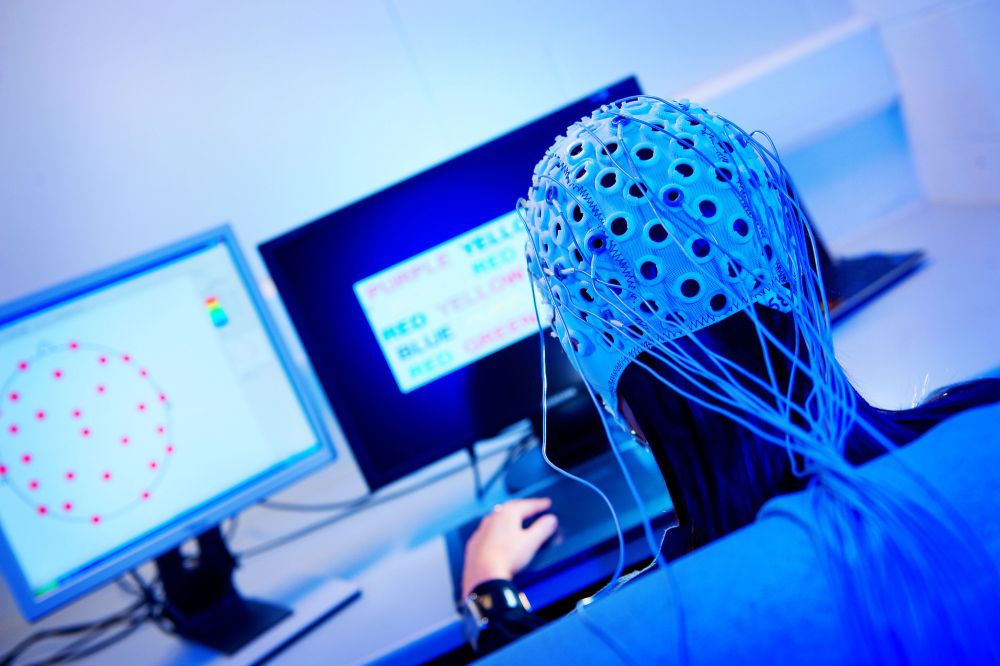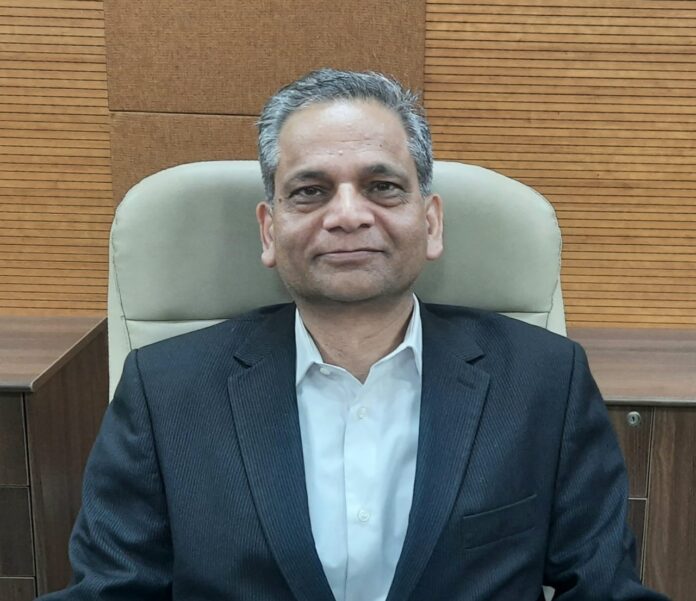Prof. Girijesh Prasad is an esteemed Professor of Intelligent Systems at Ulster University (UU), UK, and the Director of the Northern Ireland Functional Brain Mapping (NIFBM) facility within the Intelligent Systems Research Centre (ISRC). With a distinguished academic background, including a BTech in Electrical Engineering from NIT Calicut, an MTech in Computer Science and Technology from IIT Roorkee, and a PhD in Electrical Engineering from Queen’s University of Belfast, UK, Prof. Prasad has demonstrated expertise in his field. He is a Chartered Engineer and holds fellowships with prestigious organizations such as IET and IEEE.
Prof. Prasad’s pioneering work spans intelligent systems, brain modelling, and brain-computer interface (BCI) technologies, where he has made significant contributions to neuro-rehabilitation and assistive technology. His leadership has led to the development of innovative rehabilitation protocols benefiting chronic stroke patients, blending physical and mental practice stages with advanced neuro-rehab systems.
With over 285 publications and the successful supervision of 22 PhD students, Prof. Prasad’s research has garnered substantial funding from renowned national and international agencies. His impactful research has earned him esteemed accolades, including the Fellowship of the International Academy of Physical Sciences (IAPS) India and the Senior Distinguished Research Fellowship at Ulster University. Prof. Prasad’s commitment to advancing knowledge and transforming lives exemplifies his dedication to excellence in academia and research.
In a compelling interaction with The Interview World, Professor Girijesh Prasad delves into the significance of brain-computer interfaces in stroke rehabilitation. He highlights the promising results observed in trials involving these technologies with patients, discusses the potential widespread adoption of these innovative products, and emphasizes their potential benefits for individuals with autism. Here are the pivotal takeaways from his enlightening discussion.
Q: What are the mechanisms and functionalities of Brain-Computer Interfaces (BCIs) in the context of stroke rehabilitation, and how do they operate to enhance communication and interaction?
A: A brain-computer interface serves as a vital link between the brain and an external device. This connection becomes especially crucial when the neuromuscular pathway is compromised, hindering effective communication. Despite such challenges, establishing communication between the brain and the device constitutes the essence of a brain-computer interface or brain-machine interface.
Regarding its applications, two main areas stand out prominently. Firstly, in the realm of assistive technology, individuals can achieve greater autonomy. For instance, they can operate devices such as TV remotes or wheelchairs independently, enhancing their quality of life significantly. These advancements empower users to navigate their environments with ease and minimal reliance on external assistance.
The second major area of application lies in rehabilitation, a domain of particular interest. Specifically, in stroke rehabilitation, individuals often contend with motor impairments, affecting their ability to walk or utilize their upper limbs effectively. Following a stroke, individuals face significant disability initially, necessitating intensive efforts to regain mobility and functionality. However, conventional rehabilitation approaches may not always yield optimal outcomes, especially in restoring upper limb function.
Herein lies the importance of leveraging brain-computer interfaces in rehabilitation settings. By integrating these interfaces with robotic devices, individuals can engage in targeted movement exercises guided by neural commands. This approach fosters intense focus and engagement, facilitating more effective relearning and recovery processes.
Q: What’s the outcome of these technological trials on patients?
A: The development of such technology has yielded promising results, as evidenced by trials conducted at institutions like IIT Kanpur in India and Ulster University’s Intelligent Systems Research Centre. Through these trials, patients undergoing rehabilitation witnessed notable improvements, even those who had previously reached a plateau in their recovery journey.
They all showed significant improvement. However, I cannot definitively state that they have fully recovered, as our observation period was limited to just 12 sessions, and we did not continue monitoring them thereafter. Consequently, we are currently in the process of planning and hoping to secure adequate funding for a more extensive trial.
This larger trial would involve two groups: one group would receive our exercise regimen alongside the use of our device, undergoing a more prolonged and comprehensive training period, while the other group would not receive our intervention and might engage in different forms of exercise or none at all. By comparing the outcomes between these two groups, we aim to ascertain the extent of the difference our program makes. Once we have conducted this trial and analysed the results, we will be able to quantify the degree of recovery achieved, determining whether it is partial or complete.
In essence, the fusion of brain-computer interfaces with robotic technology represents a transformative paradigm in stroke rehabilitation. By harnessing the power of neural signals, individuals can embark on a path towards enhanced mobility and independence, overcoming the limitations imposed by neurological conditions.
Q: What strategies do you employ to accelerate the adoption and popularization of the device you have developed?
A: In my capacity as a professor, my foremost responsibility lies in imparting knowledge through teaching, with research serving as a supplementary pursuit. Therefore, securing adequate funding stands as a pivotal necessity in advancing our research endeavours. Alongside funding, time allocation and managing various other obligations are essential for the progression of our work. However, the pace of our research is significantly hindered by the lack of sufficient financial resources.
Consequently, we engage in a continuous cycle of applying for research grants and funding opportunities. Despite our persistent efforts, the process of securing the necessary financial backing may extend over a span of approximately four to five years. This protracted timeline underscores the intricate nature of our research, which is closely intertwined with addressing societal needs on a substantial scale.
It’s crucial to underscore that our research isn’t confined to theoretical exploration; rather, it involves practical implementation through trials conducted on real patients. Significantly, our interventions have already delivered tangible benefits to individuals in locations such as India near Kanpur and at Ulster University.
Furthermore, it’s imperative to highlight that our research endeavours have been subjected to rigorous ethical scrutiny, ensuring the welfare and safety of all participants involved. While individuals are currently reaping the rewards of our efforts, transitioning our interventions into mainstream healthcare systems and making them accessible to a broader population will necessitate a concerted, time-intensive effort. Thus, while the path ahead may be challenging, our commitment to advancing impactful research remains unwavering.
Q: What are the current perspectives on the curability of autism, and at what stage should it ideally be diagnosed?
A: I’m an engineer, not a medical practitioner, specifically trained in electrical engineering with a specialization in intelligence systems, which encompasses computer science and engineering. Despite my background, my professional journey has taught me the invaluable lesson that learning is a continuous process, extending throughout one’s life.
When individuals encounter challenges such as anxiety, fear, or communication difficulties, there exists a pathway towards improvement through targeted training programs. Extensive research demonstrates the remarkable capacity for individuals to enhance their skills and capabilities with focused, well-designed interventions.
Thus, it is entirely feasible to support individuals in overcoming these obstacles and fostering a sense of normalcy in their lives over time. This optimism is further fuelled by the trajectory of research and technological advancements, which indicate a promising future for addressing various aspects of human experience.
Central to this progress is the role of technology, exemplified by groundbreaking techniques such as Magnetoencephalography (MEG), which have revolutionized our understanding of brain function and mapping. I, as the director of a functional brain mapping facility, actively engage in research collaborations utilizing these technologies to explore and address a range of neurological conditions.
Our facility welcomes individuals with diverse conditions, including epilepsy, traumatic brain injury, and autism. Through cutting-edge technology and specialized expertise, we strive to provide comprehensive evaluation and support to those in need. Therefore, this juncture represents an opportune moment for advancing research across various fields, including autism. With the convergence of technology and expertise, the prospects for understanding and addressing complex neurological conditions have never been more promising, offering hope for a brighter future for individuals and families affected by these challenges.



